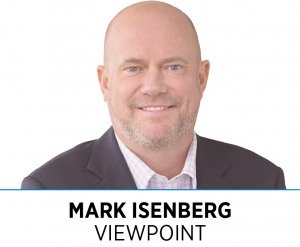Subscriber Benefit
As a subscriber you can listen to articles at work, in the car, or while you work out. Subscribe Now Physicians rarely experience legislative wins—that is, until recently. Gov. Eric Holcomb signed a two-year budget that rightfully sets reimbursement for all Medicaid services equal to the Medicare rate. The state already reimburses Healthy Indiana Plan services at the Medicare rate; however, other Medicaid services currently receive only 75% of the Medicare rate.
Physicians rarely experience legislative wins—that is, until recently. Gov. Eric Holcomb signed a two-year budget that rightfully sets reimbursement for all Medicaid services equal to the Medicare rate. The state already reimburses Healthy Indiana Plan services at the Medicare rate; however, other Medicaid services currently receive only 75% of the Medicare rate.
This lopsided equation has been a long-standing detriment to physicians and the well-being of their practices and patients. That will change on Jan. 1 when Indiana will transition to a reimbursement model with consistent rates across all its Indiana health coverage programs, including HIP, Hoosier Care Connect, Hoosier Healthwise and fee-for-service plans.
Because Medicaid payment rates are so much lower than Medicare and private coverage, it has historically made it harder for physicians to keep their practices afloat. According to the American Medical Association, the cost of running a medical practice has increased 47% since 2001, and physician reimbursement has declined 26%. When adjusted for inflation, this makes it difficult for small, rural and low-income-serving practices to stay operational (not to mention additional pending Medicare cuts for most physicians in 2024).
The “Great Resignation” has exacerbated this problem, which severely impacted health care, with many boomer physicians retiring early and others burning out due to the lack of resources, reduced pay, staff shortages and many other factors. According to the Association for American Medical Colleges, the United States faces a projected physician shortage of up to 124,000 doctors by 2034. This data cites population growth and aging as the main drivers of the increased need for more physicians to care for the underserved population.
Indiana lawmakers were proactive and smart in providing physicians fair compensation in the budgets they control—for the health of the state and its growth. The Hoosier state has experienced tremendous economic development commitments from major corporations; however, corporations expect solid infrastructure and a readily available labor force.
Lawmakers gave Indiana a head start by passing this recent budget. In my opinion, attracting and retaining physicians will be viewed as the infrastructure necessary for continued economic growth in our state. Other states might likely follow suit when they feel the harsh reality of the Association for American Medical Colleges projections.
Additionally, with the recent unwinding of Medicaid due to the end of the public health emergency resulting from the COVID lockdown, we have seen an unprecedented number of patients lose their health care coverage. During the lockdown, Indiana Medicaid members kept their coverage without interruption, something known as “continuous coverage.”
Indiana started new Medicaid enrollment in April in preparation for the unwinding of the PHE. However, according to the Indiana Capital Chronicle, since April, more than 142,000 Hoosiers have fallen off the Medicaid rolls, and physicians have lost those Medicaid patients who are no longer covered.
Each state has a unique enrollment process and has employed different tactics to inform patients about the loss of continuous coverage and how to reapply. The Kaiser Family Foundation estimates that 8 million to 24 million people will lose their Medicaid coverage nationwide.
In light of the many challenges patients face with accessing quality care, this change to Indiana’s Medicaid reimbursement model provides an unprecedented opportunity to address health equity in Indiana. I believe that, by creating a new Medicaid reimbursement model, we now have the potential solution to significantly improve health equity in the Hoosier state while also stimulating economic growth for the state and strengthening health care practices that call Indiana home. Truly a win–win.•
__________
Isenberg is executive vice president of health care advocacy at Zotec Partners.
Please enable JavaScript to view this content.
